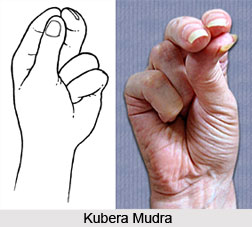 Bhakti Yoga refers to a spiritual practise of offering utmost devotion (Bhakti) to God. Bhakti is a series or succession of mental efforts at religious realization, beginning with ordinary worship and ending in a supreme intensity of love for God. Bhakti is the yoga of a personal relationship with God. A Bhakti Yogi is motivated chiefly by the power of love and sees God as the embodiment of love.
Bhakti Yoga refers to a spiritual practise of offering utmost devotion (Bhakti) to God. Bhakti is a series or succession of mental efforts at religious realization, beginning with ordinary worship and ending in a supreme intensity of love for God. Bhakti is the yoga of a personal relationship with God. A Bhakti Yogi is motivated chiefly by the power of love and sees God as the embodiment of love.
Origin of Bhakti Yoga
Bhakti Yoga is considered by some to be the oldest form of Yoga with its roots in the Vedas, or ancient scriptures of India. The concept of Bhakti Yoga, or the path of love in Bhagavad Gita, originated in the epic poem Mahabharata. Bhakti Yoga eventually became a popular devotional movement in India known as the Bhakti Movements. This movement flourished between 800 and 1100 A.D. in Southern India with the explanations of divine experiences by the Vaishnava Alvars. Bhakti Yoga continued to spread throughout India as many poet-saints travelled throughout the countryside singing the praises of their Gurus and sacred deities.
Forms of Bhakti Yoga
 The various forms of Bhakti Yoga are the ways in which a devotee attains the Supreme Ideal of Life. There are 9 forms of Bhakti Yoga which are as follows;
The various forms of Bhakti Yoga are the ways in which a devotee attains the Supreme Ideal of Life. There are 9 forms of Bhakti Yoga which are as follows;
•"Shravanam" refers to listening to the stories of personal deity,
•"Kirtanam" refers to chanting the name of devotee with devotion,
•"Smaranam" is remembering the deity throughout the day,
•"Padashevanam" is service to the divine,
•"Archanam" includes ritualistic offering to the deity,
•"Bandaram" refers to worshipping everything as the form of divinity,
•"Dasyam" is being the servant of Almighty,
•"Sakhyam" refers to friendship with the deity,
•"Atma Nivedanam" depicts total surrender.
Stages in Bhakti Yoga
Bhakti Yoga has 2 levels; the first is called "Gauni", or preparatory and includes all the preliminary practices; the second is "Para", or the state of supreme love and devotion to God. A beginner in Bhakti Yoga should first of all free his heart from attachment to earthly objects and pleasures; then realize divinity and consciousness of God in this life. When Bhakti ceases to be in preparatory stage and passes to the supreme, there is no fear of these hideous manifestations of fanaticism.
Aim of Bhakti Yoga
The goal of Bhakti Yoga is far different and difficult apart from just the love for God. Bhakti yoga is a real and genuine search of God, wherein a Bhakti yogi searches for happiness and Moksha. When a man practices Bhakti, he loves everyone and he becomes satisfied forever, since all his cravings for the earthly benefits get reduced. Bhakti is greater than Karma and Yoga, because the latter two are practiced for a purpose, whereas Bhakti is its own means and its own end. The one great advantage of Bhakti is that it is the easiest and the most natural way to reach the great divine end in view.
Practising Bhakti Yoga
Bhakti Yoga focuses on the concept of love and devotion. To practice Bhakti Yoga, one should shatter the ego, surrender to object of devotion, praying and meditation. In order to practise Bhakti yoga, it is very important for the practitioner to surrender himself to God by channelling his emotions into unconditional love for God, turning into devotion.




















